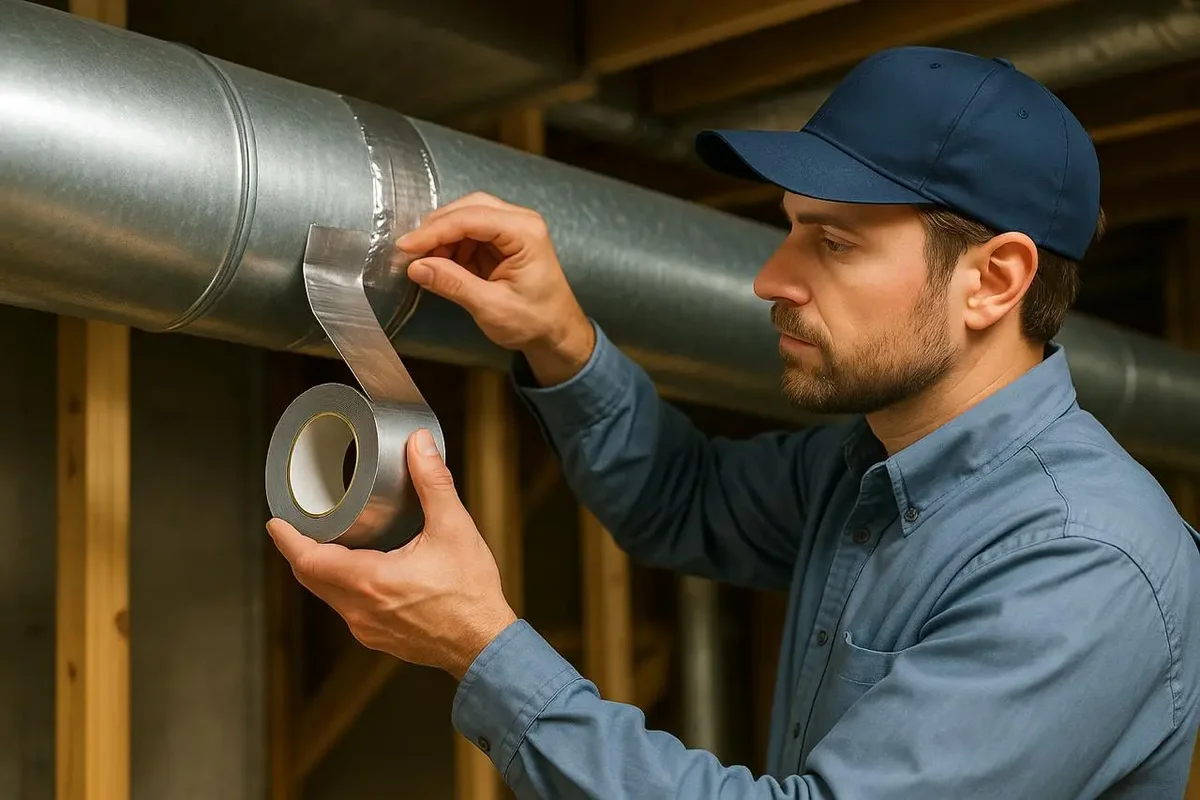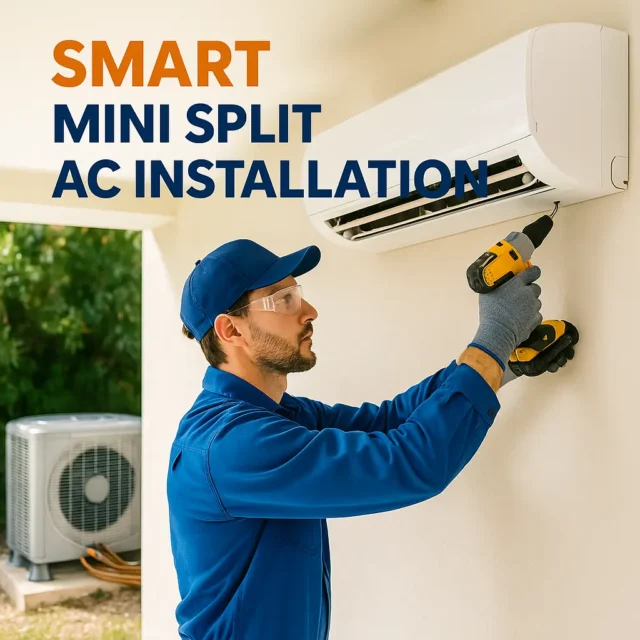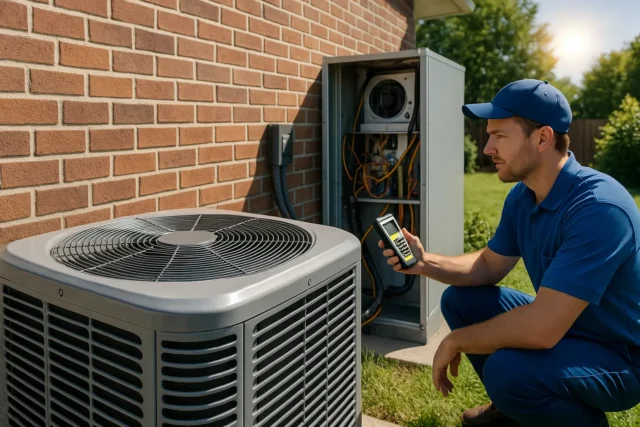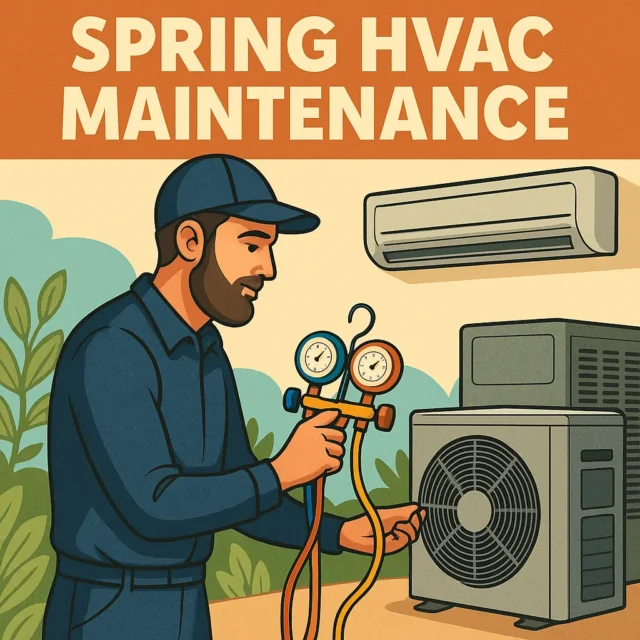HVAC Duct Tape Sealing Explained: Keep Your Airflow Efficient

If you’ve ever wondered why your energy bills keep climbing or why certain rooms never feel the right temperature, the culprit might be hidden in your ductwork. Air ducts are like the veins of your HVAC system, carrying heated or cooled air throughout your home. But when those ducts leak, they waste energy and force your system to work harder. A simple yet effective solution is hvac duct tape sealing, a method used to patch small gaps and cracks in ducts. In this detailed guide, we’ll explore how it works, when you can do it yourself, and when to call the experts.
Why Sealing Ducts Matters More Than You Think
Leaky ducts are one of the most common sources of wasted energy in homes. Studies show that up to 20–30% of conditioned air escapes through holes, gaps, or poorly connected joints. That means nearly a third of the air your HVAC system produces may never even reach your living space.
Here are the biggest reasons duct sealing is worth your attention:
Energy savings – Stop paying for cooled or heated air that never makes it to the rooms you use.
Consistent comfort – Balanced airflow makes every room the same temperature.
Cleaner air – Sealed ducts keep dust, allergens, and even mold spores from circulating.
System longevity – Less strain means your HVAC equipment lasts longer.
What HVAC Duct Tape Sealing Involves
When most people hear “duct tape,” they picture the silver household roll in every toolbox. The truth is, that tape isn’t meant for HVAC systems and usually fails in months. True duct sealing requires tapes and sealants designed specifically for heating and cooling ducts.
The Best Options for Sealing
Foil-backed tape – Heat-resistant and long-lasting, perfect for small leaks.
Mastic sealant with mesh tape – A paste-like substance brushed onto ducts, often paired with mesh for added strength.
UL-rated HVAC tape – Tested to withstand the temperatures and pressures of duct systems.
Ordinary tape dries out and peels off, so choosing the right material makes the difference between a short fix and a reliable seal.
Step-by-Step Guide to Sealing Ducts
If you’re handy and can access the problem area, small leaks are manageable as a DIY project. Here’s how to do it:
Inspect your ductwork – Look for visible gaps, disconnected joints, or spots where air blows out.
Clean the surface – Remove dirt, grease, and dust with a damp cloth, then let it dry.
Apply tape or mastic – Cover leaks with foil tape or brush mastic sealant over cracks.
Seal connections tightly – Smooth the tape down to eliminate bubbles and ensure full contact.
Test your system – Turn on your HVAC and feel around for airflow to check if the leak is closed.
For visible leaks, this process often takes less than an hour and can have a noticeable effect on comfort and efficiency.
Signs That Duct Tape Sealing Is Needed
Sometimes leaks are obvious, but other times you may not realize your ducts are wasting air. Watch for these warning signs:
Sudden or unexplained increases in energy bills.
Uneven heating or cooling in different rooms.
Excess dust or musty odors in your home.
HVAC system running longer than usual.
Visible holes or disconnected joints in ductwork.
If these issues sound familiar, duct sealing should be on your to-do list.
Why Professional Sealing Often Beats DIY
DIY sealing can be helpful for small leaks, but it’s not always enough. Professionals bring specialized tools and techniques, including:
Aerosol-based sealing – A mist that seals leaks from the inside.
Duct pressurization tests – To detect hidden leaks you can’t see.
Full inspections – To spot problems like damaged insulation or undersized ducts.
Calling a licensed technician ensures that sealing is done once and done right. For more complex problems, visit our duct sealing service page to learn how we can help.
Benefits of Long-Term HVAC Duct tape Sealing
Investing in proper sealing offers advantages far beyond just saving a little money.
Lower utility bills – Sealed ducts reduce wasted energy.
Improved comfort – Even airflow throughout your home.
Cleaner indoor air – Helps reduce allergens and pollutants.
Eco-friendly living – Lower energy waste means a smaller carbon footprint.
Extended equipment life – Less strain prevents costly breakdowns.
Many homeowners report noticeable improvements within the first billing cycle after sealing.
Common Mistakes to Avoid
Even though duct tape sealing seems simple, many homeowners make mistakes that cause the repair to fail:
Using regular gray tape instead of HVAC-rated foil tape.
Forgetting to clean surfaces before applying sealant.
Covering only visible leaks but ignoring hidden sections.
Not pressing the tape firmly enough for a full bond.
Avoiding these pitfalls ensures your seal lasts longer.
Professional Sealing vs. Store-Bought Tape
It’s tempting to patch up leaks with a quick roll of tape, but store-bought solutions aren’t always reliable. Professionals use materials that stand up to heat, humidity, and air pressure. They also understand building codes, which means the job is safe and long-lasting.
A small DIY repair is fine for temporary relief, but if your home struggles with uneven temperatures or dust, professional sealing is the smarter investment.
How Often Should You Re-Seal Ducts?
Even high-quality sealing materials won’t last forever. On average, foil-backed tape or mastic can remain effective for 5–10 years, depending on system usage and conditions. To keep ducts in good condition:
Inspect them every 3–5 years.
Look for peeling tape, cracks, or new leaks.
Call for professional maintenance if problems persist.
Preventive checks save money compared to costly energy loss.
Final Thoughts on HVAC Duct Tape Sealing
Air leaks may be invisible, but they can cost you comfort, health, and money. By sealing ducts with the right materials, you protect your home’s air quality and energy efficiency. Small leaks are manageable as a DIY project, but for lasting results, nothing beats professional service.
Your HVAC system is one of the most important investments in your home. Don’t let air leaks reduce its efficiency. Whether you’re sealing a small gap or scheduling a professional inspection, duct sealing is a step toward better comfort and lower energy bills.


